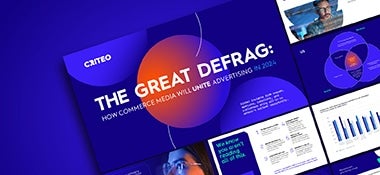Programmatic technology has empowered publishers with an efficient way to sell their inventory without reliance on a sales team buying expensive lunches for clients. Traditional salespeople have transformed into data-savvy programmatic teams with a laser focus on yield. And advertisers can buy billions of impressions, layering in the relevant data and finding immediate results, which can be amended in real time.
Publishers are increasingly divided into two camps: those who invest in their content, and build deep and engaged relationships with their audience, and those built around “click bait” approaches to acquiring inventory, knowing that they are bringing a user in for a few seconds without engaging them in the long term.
The former will drive better performance for advertisers, but an unfortunate reality is that, in the programmatic world, the latter group is having the most relative success. That said, this “success” is, arguably, meaningless reach at the expense of relevance.
In short, despite all this potential, publisher revenue has not grown to match it.

Once you subtract out eMarketer’s estimates of Google’s share of search revenue this year ($28.55 billion) and Facebook’s forecast share of display ($16.33 billion), publishers are left with just a little more than $38 billion of the expected 2017 ad spend. Header bidding can help address this imbalance.
Today, we are in the midst of Programmatic 2.0 – brought on by the rise of header bidding – representing a second chance for the ecosystem to realize the potential for efficient monetization of digital inventory that programmatic first promised. Used correctly, header bidding will remove the inefficiencies, clutter, and noise that have developed within programmatic advertising, particularly RTB.
Here are five things publishers need to keep in mind.
1. All buyers are different and should be treated accordingly.
Every ad buyer is different and should be treated accordingly. Some will have specific needs in terms of type of inventory; some will be looking only for reach; and others will have user or time constraints. Understanding a buyer’s objectives means publishers can set up their ad stack to drive not only short-term revenues, but also long-term business with their customers.
It’s critical to understand the buyer’s metrics, as well as their business model and measures of success. The space will evolve more, and this will be the only way to maintain success. For example, does a buyer need to be client side, or can they fit into a server-to server-solution? There isn’t a fixed answer for everyone.
2. Not all header partners are giving you full value.
Every third party that a publisher works with will be charging an ad tech ‘tax.’ Either directly or indirectly, all partners will be taking some value out of the dollar an advertiser spends. Therefore, publishers need to be clear on the value each header partner brings.
For example, are they accessing unique demand? Do they have an incremental spend that can’t be accessed via another partner? Are they creating new formats (e.g. native)? If yes, publishers need to invest in the relationship and accept the margin made by the third party. Otherwise, it’s very likely the publisher may generate some short-term gains, but will lose over time by not investing in partners that would add value.
3. Yield optimization is critical and can’t be outsourced.
Having the correct approach is critical to growing a long-term and sustainable relationship between a buyer and seller. It’s unlikely that a third party will be adding value if their business is simply ‘yield optimization.’ Such an approach tends to drive the most value from each bid using soft floors or first-price techniques, leading to a vicious cycle that results in long-term losses for the publisher.
This may work for some buyers, but for many others, including Criteo, this approach is the biggest factor hurting publisher margins, ultimately resulting in buyers bidding a fraction of what they’d be willing to pay for inventory. Employing this type of game theory between buyers and sellers creates a lose-lose result.
(Learn More: How Publishers Can Use Header Bidding to Generate Revenue)
The alternative is for publishers to encourage open dialogue with end buyers, enable tailored setups, and create strategies to meet common objectives. This deeper investment will result in long-term benefit and stop creating opportunities for simple arbitrageurs.
4. Obfuscating inventory is no way to do business.
From a buyer’s perspective, there are two reasons that publishers obfuscate inventory: either a buyer wouldn’t want it because it’s inappropriate, illegal, or fraudulent, or it’s premium inventory being treated as a clearing house, selling for below its actual value to achieve 100% fill.
While the latter approach often makes good business sense, the unfortunate side effect is it allows the former to thrive. Once premium publishers stop obfuscating inventory, we as an industry will be able to make huge strides. There are other ways to clear remnant inventory, and we need to build trust between buyers and sellers.
5. The future is mobile, native, and video.
Header bidding is now the solution for standard display on the desktop. While header bidding is easiest in standard display, publishers must ensure the most popular formats are at the center of their strategies. In particular, mobile, native, and video are formats that also must be incorporated into a holistic approach to header bidding.
So how do we reach the full potential of header bidding? Publishers need to combine the old and new. Header bidding is new technology that delivers a huge potential opportunity. The old values around understanding the customer’s needs, developing unique and tailored solutions, and ensuring your partners are driving true value across all your inventory are what will drive success. The rise of header bidding makes this all possible.
Pooled data assets have made it possible to connect with shoppers on any screen, in any format, at a global scale. In our report with Forbes Insights, we surveyed 500+ marketing execs, many who think collaboration is the way to win, especially when competing with tech giants.














